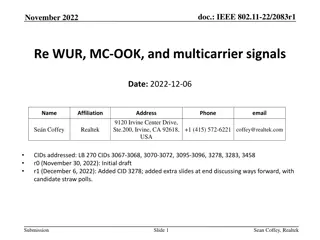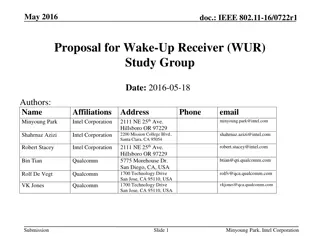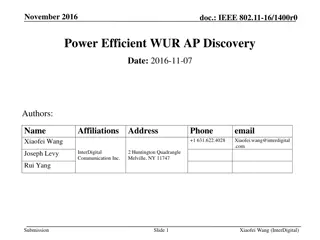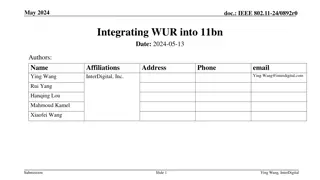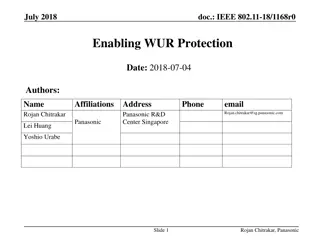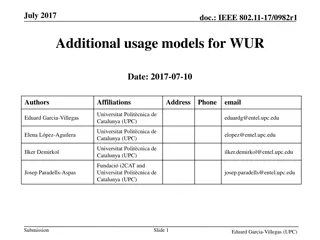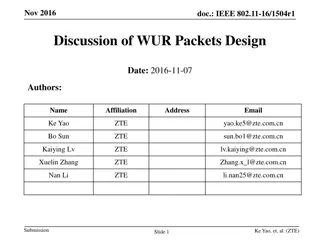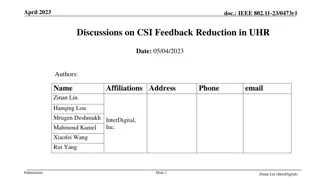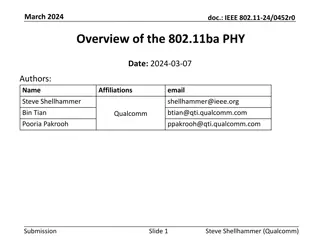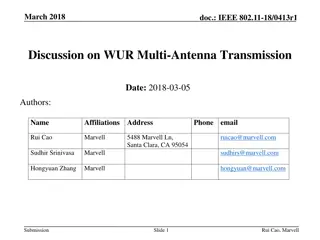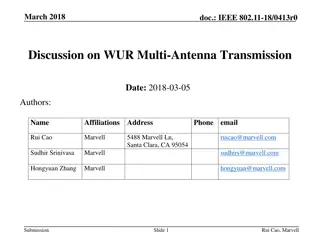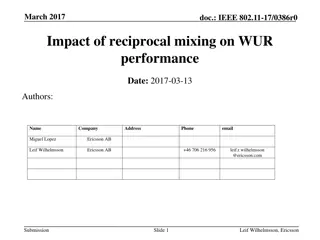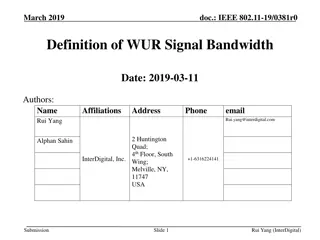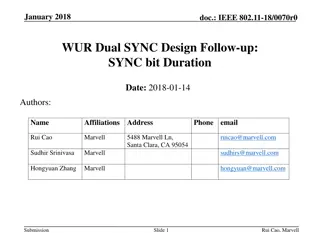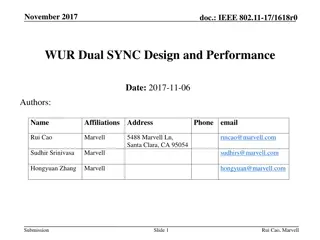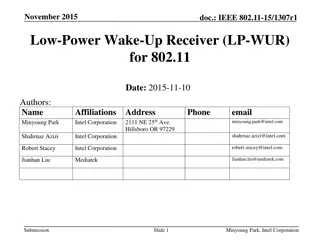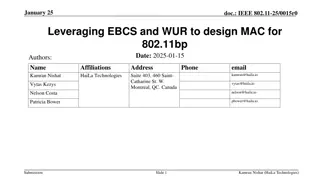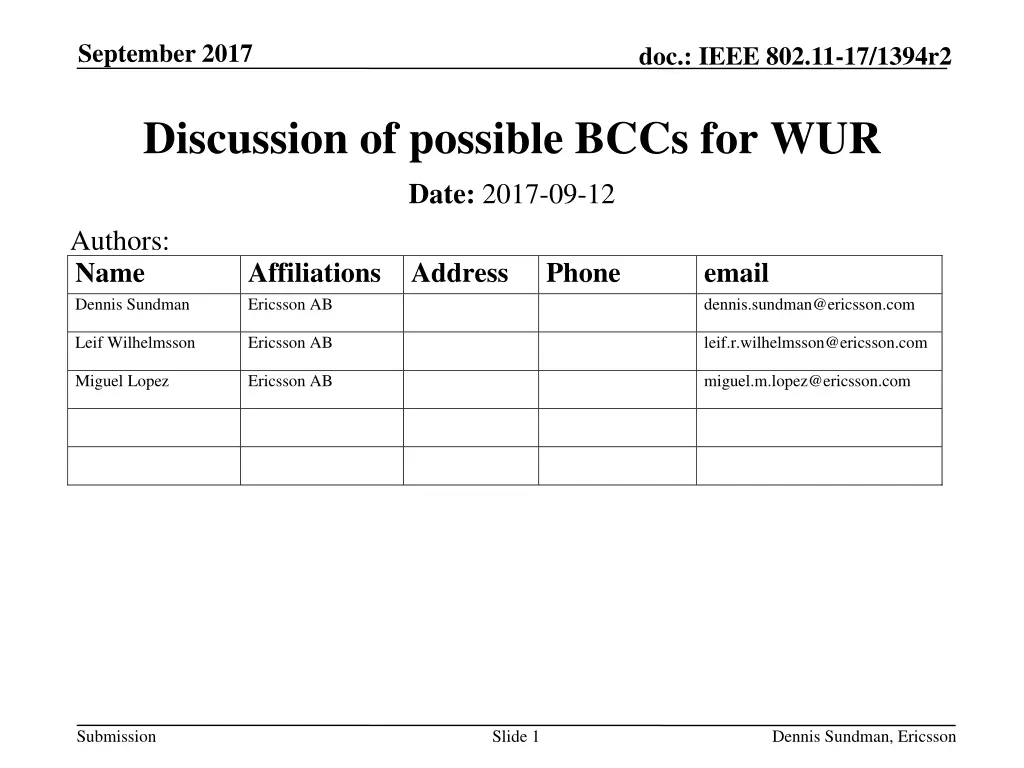
Discussion of IEEE 802.11 BCCs for WUR
"Explore the use of IEEE 802.11 BCC for WUR and address complexity concerns through code variations. Compare decoding complexities and performance impacts of different codes with systematic and non-systematic approaches."
Download Presentation

Please find below an Image/Link to download the presentation.
The content on the website is provided AS IS for your information and personal use only. It may not be sold, licensed, or shared on other websites without obtaining consent from the author. If you encounter any issues during the download, it is possible that the publisher has removed the file from their server.
You are allowed to download the files provided on this website for personal or commercial use, subject to the condition that they are used lawfully. All files are the property of their respective owners.
The content on the website is provided AS IS for your information and personal use only. It may not be sold, licensed, or shared on other websites without obtaining consent from the author.
E N D
Presentation Transcript
September 2017 doc.: IEEE 802.11-17/1394r2 Discussion of possible BCCs for WUR Date: 2017-09-12 Authors: Name Dennis Sundman Affiliations Address Ericsson AB Phone email dennis.sundman@ericsson.com Leif Wilhelmsson Ericsson AB leif.r.wilhelmsson@ericsson.com Miguel Lopez Ericsson AB miguel.m.lopez@ericsson.com Submission Slide 1 Dennis Sundman, Ericsson
September 2017 doc.: IEEE 802.11-17/1394r2 Abstract Using the 802.11 BCC for WUR has been proposed [1] Concerns has been expressed regarding the decoding complexity [2] In this contribution we discuss two means to address this complexity concern: 1. Using a less complex code and study performance impact 2. Using a systematic code to allow for implementations without a Viterbi decoder Submission Slide 2 Dennis Sundman, Ericsson
September 2017 doc.: IEEE 802.11-17/1394r2 The codes under consideration The 802.11 rate code Const. length 7, polynomial = [133, 171], nr. memory elements 6 A lower complexity rate code Const. length 4, polynomial = [17, 13], nr. memory elements 3 This is the BLE long range code Systematic versions of the two above codes Wi-Fi: Constraint length 7, polynomial = [1, 171/133] BT: Constraint length 4, polynomial = [17/13, 1] Submission Slide 3 Dennis Sundman, Ericsson
September 2017 doc.: IEEE 802.11-17/1394r2 Decoding complexity Decoding is typically done with a Viterbi decoder Therefore, the decoding complexity scales proportionally with the number of states in the trellis The number of states in the trellis are ??, where ? is the number of memory elements in the encoder In [1], the energy to decode a 100 bit payload is ????,?? ?? 1 ??, thus ????,???????? 1 81 ?? = 125 ?? Submission Slide 4 Dennis Sundman, Ericsson
September 2017 doc.: IEEE 802.11-17/1394r2 Systematic vs Non-Systematic Codes For systematic codes, the information bits are part of the code word Ex. non-systematic Ex. systematic Output: {?1, ?2 } Output: {?11, ?12 } Input: {?1, ?2, } Input: {?1, ?2, } Output: {?21, ?22 } Output: {?21, ?22 } The receiver may read the message without using a convolutional decoder Submission Slide 5 Dennis Sundman, Ericsson
September 2017 doc.: IEEE 802.11-17/1394r2 Simulation Results 5 dB The lower complexity code performance is about 0.3 dB worse than the Wi-Fi code in TGnB and TGnD The systematic versions of all codes perform identically to the non-systematic codes in terms of PER Submission Slide 6 Dennis Sundman, Ericsson
September 2017 doc.: IEEE 802.11-17/1394r2 Straw Poll Do you support to have a BCC for the 62.5 kbps mode of the WUR? Y/N/A: 14/21/15 Submission Slide 7 Dennis Sundman, Ericsson
September 2017 doc.: IEEE 802.11-17/1394r2 References [1] Steve Shellhammer and Bin Tian, WUR Data Rates, IEEE 802.11-17/0990r2, July 2017 [2] Eunsung Park et al., Symbol Structure, IEEE 802.11-17/1347r1, Sept. 2017 Submission Slide 8 Dennis Sundman, Ericsson

